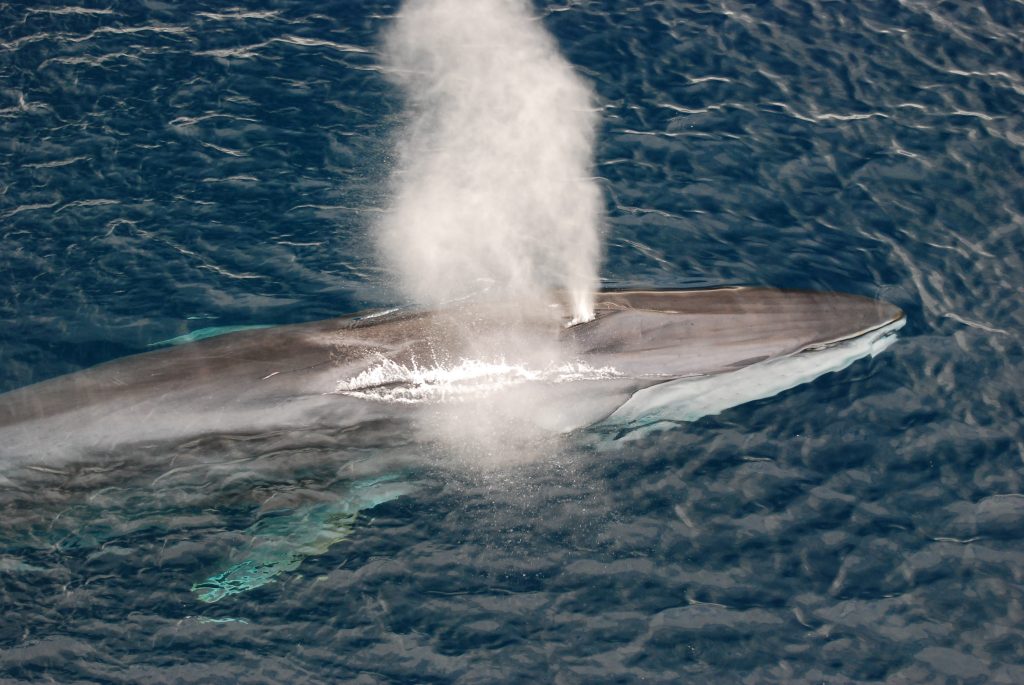Against adding fin whales to the list of species subject to commercial whaling

Japan’s Fisheries Agency decided to include fin whales in its list of species for commercial whaling, and was inviting comments on the matter until June 5th.
JWCS has submitted the following comment:
Opinion: We are against adding fin whales to the list of species subject to commercial whaling.
Reasons are as follows:
1. Endangered species should not be exploited commercially
Fin whales are an endangered species listed as VULNERABLE (VU) on the IUCN Red List. The estimated number of mature individuals in 2018 was 100,000, about 45% of the 1940 level. Although the population has started to increase since whaling was reduced, it is still at a level that requires protection (1). Fin whales are also internationally protected by the Convention on International Trade in Endangered Species of Wild Fauna and Flora (CITES) and the Convention on the Conservation of Migratory Species of Wild Animals (CMS). However, Japan entered a reservation for fin whales in the CITES and has not ratified the CMS. Fin whales should not be subject to commercial whaling, but rather should be protected through international cooperation.
2. No stock assessment survey has been carried out
“Resource Management Room” on the Fisheries Agency’s website states in “2. Basic Concepts Regarding Resource Management” that “We will establish a system to ensure the independence of resource surveys and resource assessments, and will have external experts verify them to ensure their scientific objectivity, validity, and reproducibility. Furthermore, in order to foster understanding of the direction of resource management, information on resource surveys and assessments, which form the basis for resource management, will be proactively published in an easy-to-understand format for fishermen and the general public”(2).
However, fin whales are not included in the fish species that are subject to resource assessment and survey by the National Research and Development Corporation, the Japan Fisheries Research and Education Agency (3). In addition, the agency has not “actively publicized information on resource surveys and resource assessments in a form that is easy to understand for the general public.”
Before soliciting such public comments, information that “can verify scientific objectivity, validity and reproducibility” should be made public.
3. The precautionary principle should be applied when deciding target species and catch volumes
Studies have shown that ocean heat waves in the northeast Pacific from 2014 to 2016 caused a 20% decline in North Pacific humpback whales from 33,488 in 2012 to 26,662 in 2021 due to reduced sea surface winds, reduced upwelling and nutrient-rich seawater, which lead to a lack of food from marine ecosystem anomalies (4).
As the impacts of climate change are difficult to predict using current methods, and above studies indicate the magnitude of population declines, the precautionary principle should be applied to the exploitation of wildlife, including fisheries target species.
References
(1) IUCN Red List https://www.iucnredlist.org/species/2478/50349982 (Checked on June 2, 2024)
(2) Fisheries Agency “Resource Management Room” https://www.jfa.maff.go.jp/j/suisin/ (Checked on June 2, 2024)
(3) National Research and Development Corporation, Japan Fisheries Research and Education Agency “Search for fish species subject to stock assessment and survey”
https://www.fra.affrc.go.jp/shigen_hyoka/SCmeeting/shigen_hyoka_portal/datatable.html
(Checked on June 2, 2024)
(4) Cheeseman et al.(2024)Bellwethers of change: population modelling of North Pacific humpback whales from 2002 through 2021 reveals shift from recovery to climate response
The Royal Society https://doi.org/10.1098/rsos.231462
